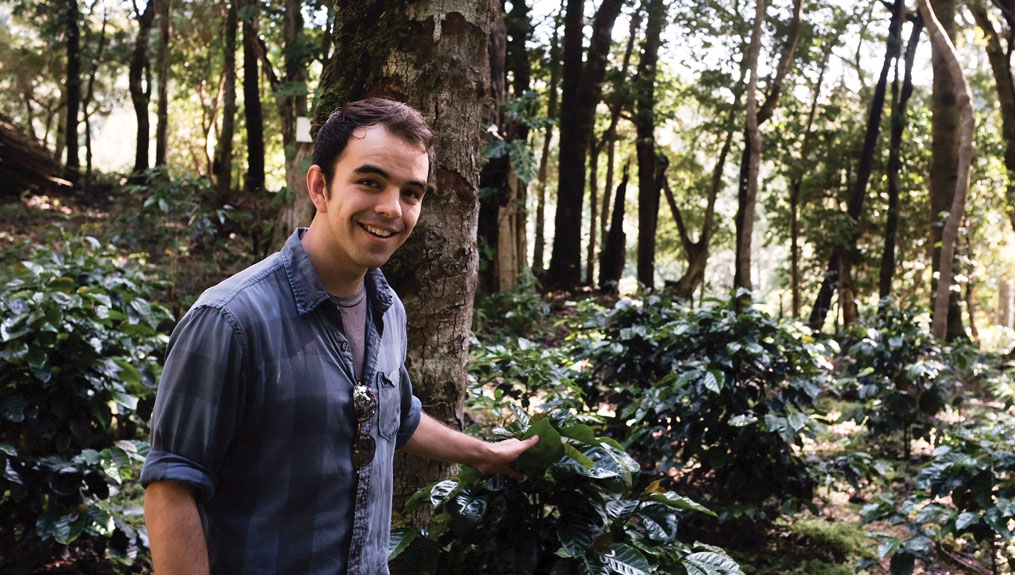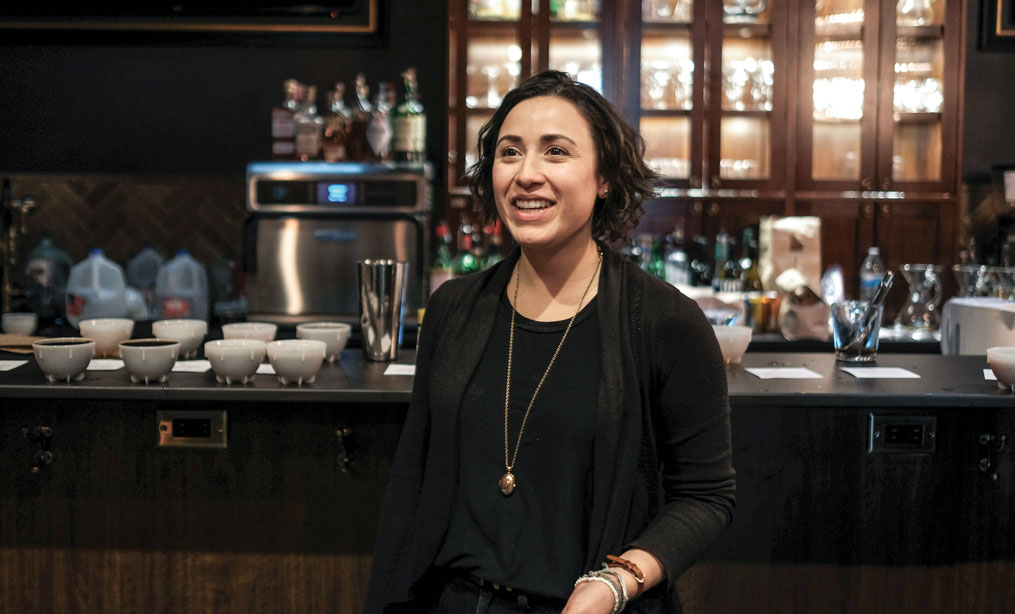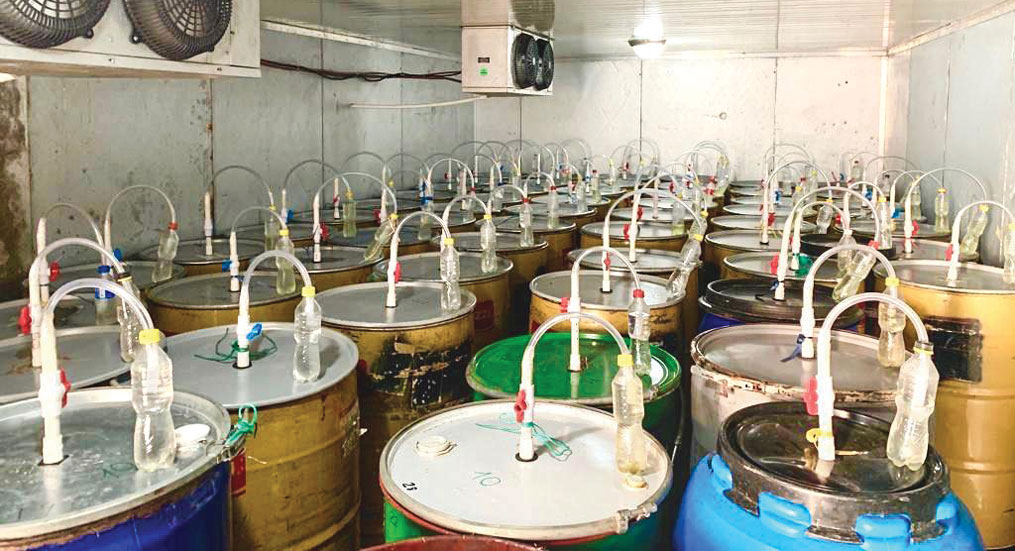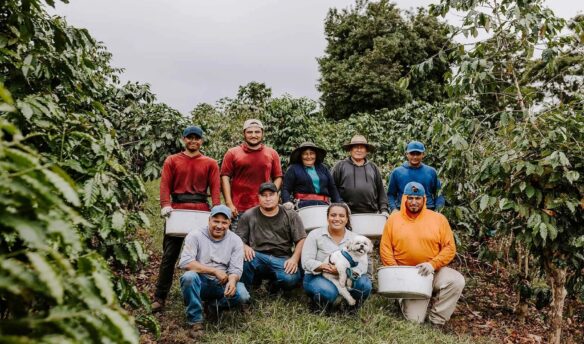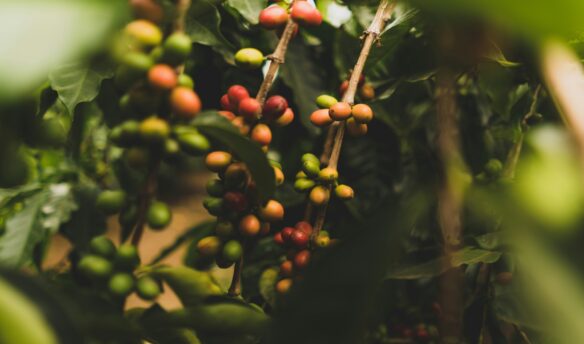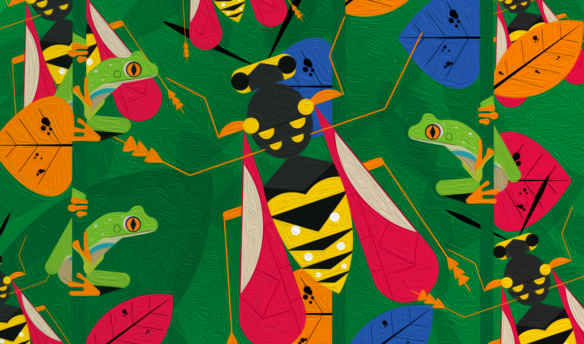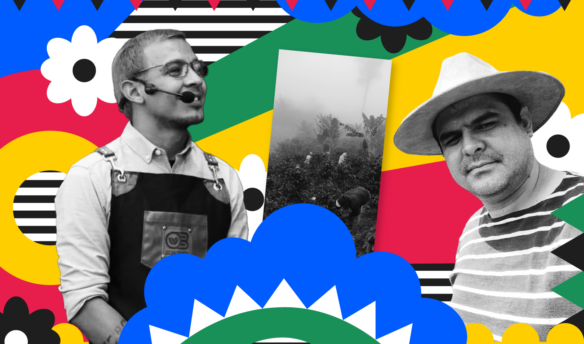Keith Pech of Damarli Estate in Boquete, Panama.
[W]hether it’s sourdough bread, yogurt, or chocolate, fermentation is essential in creating many of our staple foods and beverages, and coffee is no exception. Different coffee-producing regions have different fermentation traditions, which, for the most part, have been handed down from generation to generation. But a growing number of coffee producers are experimenting with new fermentation techniques to modulate the flavor profile of their coffee and add value to their product—just don’t call it a trend.
“Calling fermentation a trend is a really silly way to talk about it. It’s the oldest method of food preservation,” says Lucia Solis, a fermentation expert who consults with coffee producers. “The trend is that people are paying attention. To say that fermentation is a trend is disingenuous. To say that people care about their coffee, that’s the trend.”
Fermentation is a metabolic process in which organic material is broken down by yeasts and bacteria. In the case of beer or wine, the fermentation process converts sugar into alcohol. But according to Solis, there’s less similarities to coffee fermentation than one might think.
“In coffee, we don’t drink the fermentation, we drink a byproduct of the fermentation,” says Solis. “We drink the coffee seed, not the fermented water.” After a decade in the wine industry, Solis was recruited by Scott Labs (no association with the namesake of the SL-28 coffee variety) to experiment with using different yeast strains in coffee fermentation. What started as a temporary project turned into a full-time job, and Solis decided to leave the wine industry and focus entirely on coffee.
“Coffee was a completely new frontier,” she says.
Part of the confusion surrounding fermentation has to do with the way the coffee industry talks about it. Solis observes fermentation is usually referred to as a mechanical step in processing, not a biological process.
“The biggest misconception is that fermentation only happens in the tank, instead of it happening all the time,” she says. “As soon as the cherry is plucked from the tree, that is an opportunity for it to start fermenting. Now you have an orifice where the cherry was picked that has cherry juice available and the yeast and the bacteria that are in the air can start fermenting.”
According to Solis, it’s not a question of whether coffee experiences fermentation—it does. Contrary to popular belief, even natural processed coffees experience fermentation while drying. Instead, the issue is whether coffee producers can control or manipulate the fermentation. This is where Solis comes in.
“These are private clients that hire me to come to their mill. Some are fourth or fifth generation coffee farmers and they’re looking to compete in today’s market,” she says. “I work with their existing infrastructure and design a fermentation protocol for them to help them have a consistent flavor profile and differentiate their product.”
Panama
One producer who was inspired by Solis to start experimenting with different fermentation techniques is Keith Pech of Damarli Estate in Boquete, Panama. Pech, along with his father, David, developed a processing technique they have dubbed “Noble process.”
“We put the cherries in tanks. They’re very ripe. We float them beforehand. We clean them,” says Pech. “It’s in there about a week. There’s no oxygen, we use a one-way valve.”
Pech admits the process is similar to what other coffee producers are calling “carbonic maceration,” a term borrowed from the winemaking technique popular in Beaujolais, France.
“The actual skill of it has a lot more to do with the monitoring of it,” says Pech. “We found certain things start happening under certain conditions based on our climate.”
After a few years of experimenting, Pech is starting to see Damarli Estate’s Noble process become one of their highest-scoring coffee.
“It’s more tropical. When I’m breaking, there’s a lot more fruit in the cup. It’s a lot more expressive,” says Pech. “It’s a lot bigger punch out of what would traditionally be a natural. Last year was the first year we submitted a Noble to the Best of Panama.”
The Best of Panama, famously, crowns some of the most expensive auction lots on record. For producers, it’s also an opportunity to receive critical feedback from an esteemed jury of judges from around the world.
“From the national side you have about ten cuppers grading it and from the international side you have another ten. It scored one-and-a-half points higher than our normal naturals we submitted,” says Pech. “Same varietal. Same plot. Simply that process. It brought more to the cup.”
Colombia
Perhaps the best-known experiments with fermentation have come from La Palma y El Tucan in Zipacón, Colombia. La Palma’s lactic acid and acetic acid processed coffees have become a fixture of barista competitions around the world, particularly paired with more exotic coffee varieties, like Sidra or Gesha.
“When we first started processing coffee cherries at the wet mill, we instantly fell in love with the complexity of the entire process, and saw a huge potential to innovate and experiment,” says Felipe Sardi, co-founder of La Palma y El Tucan.
“We slowly started to understand that through fermentation, we were in fact triggering a process of acidification and disintegration of sugars; the breakup of the pectin molecules found in the mucilage,” he says. “As microorganisms feed on the sugars to produce ethanol, organic acids and carbon dioxide, there is a decrease in the Brix levels of the coffee mucilage, which is eventually removed.”
The process of developing their fermentation techniques included a fair amount of trial and error.
“Temperature and humidity levels also accelerated the process and eventually ruined many batches, by increasing the chance of fungus, which spoiled the fruit and left undesirable flavors as a result,” says Sardi.
Eventually, the team at La Palma cemented two different techniques, which they’ve dubbed lactic acid process and acetic acid process. The two techniques produce very different cup profiles. In the lactic acid process, Sardi noticed a significant difference in mouthfeel.
“The intended profile is an intense, very sweet, chocolatey and buttery coffee with lactic acidity and a velvety body that results from the higher lactic acid content present in the cup,” says Sardi.
La Palma’s acetic fermentation is similar to what’s often called a “dry fermentation.” After depulping, the coffee is placed in concrete tanks, but instead of being soaked in water, it’s regularly stirred. The presence of oxygen leads to an increased amount of acetic acid—an acid normally associated with natural process coffees.
“Our acetic processing aims to encourage a low to medium bodied coffee with a wine to citrus like acidity, and a very sweet aftertaste,” says Sardi.
La Palma has approached all of their fermentation techniques as open source, and helped process other producers’ cherries as part of their Neighbors and Crops program.
“We have identified more than 200 coffee-growing families located within a ten kilometer radius of our farm. It is through these neighbors that we are able to buy and process exceptional coffee cherries, while controlling every step of the production line,” says Sardi. “The program is designed to offer our neighboring coffee-growing families various benefits—monetary and non-monetary—that help us incentivize them to become an active part of this industry. Together we can commit to the highest-quality standards possible, while focusing on innovative practices that protect our ecosystem, our land, our home.”
Honduras & Nicaragua
For the farms of Fincas Mierisch, located in both Honduras and Nicaragua, different fermentation techniques are more than a chance to discover new flavor potential—they provide a sense of security in the midst of political and social unrest.
“Each year we always strive to improve on the quality of our coffee. We’re never satisfied and we believe we can always do better,” says Erwin Mierisch, the youngest member of the Mierisch clan and the latest to join the family business. “This coupled with our tendency to get really involved and attached to a subject that sparks our interest is what propelled us to try new fermentation techniques this current harvest.”
He continues: “But something else propelled us, me particularly, which was the socio-political unrest occurring in Nicaragua. The uneasiness about the future of our country, and the fear that our clients would stop buying from us due to the risk associated with purchasing coffee from Nicaragua right now. I wanted to process a coffee so good that people would be willing to take that risk.”
For Mierisch, this meant taking a deep dive into fermentation research.
“We’ve talked to different experts on the subject, such as Lucia Solis, and read countless scientific papers, articles, and watched many videos,” says Mierisch. “The internet opened up a sea of information from experts, other producers, and similar techniques used in other industries such as cacao, wine, and beer.”
In addition to more conventional fermentation techniques, like a wet aerobic soak, Fincas Mierisch is experimenting with climate-controlled anaerobic barrel fermented coffees and their own controversial perla negra process.
“We spread out pulped coffee as a thin layer on a plastic tarp inside a dark corner of our warehouse and cover it with another plastic tarp. It will remain covered for 96 hours precisely and then taken to our African beds for drying,” says Mierisch. “Perla Negra is characterized by its lactic body, condensed milk, dark chocolate, and dark fruits. Some people also identify blue cheese as well. This is a controversial coffee, as we noticed that people either love it or hate it, there seems to be no in between. It’s definitely not for everyone.”
Between their more conventional lots and these new experimental processes, the Mierisch family feels they are able to give their clients a more diverse offering.
“We were so excited, and a bit relieved, that these new techniques were so well received,” says Mierisch. “It really cements the idea that our hard work and passion paid off.”
Potential for Improvement
For Solis, however, the real potential in controlled fermentation is not creating competition-winning microlots, but helping producers of commodity grade coffee improve to specialty grade.
“The dramatic nature of using selected yeasts to manipulate the fermentation has to do with the baseline the coffee is starting with. I’ve seen it move a coffee ten points, but that’s because it was starting at 70,” says Solis. “But you can’t move an 80 to 100 just using these techniques. An 83, 84, 85, that’s where you get one to two points benefit.”
With C market prices below the cost of production for many producers, improving to specialty grade can have a big impact.
“If I can get a producer who most of their coffee is cupping at a 78, and all of a sudden we can move most of their production to an 83,” she says, “that’s a huge earning for them.”
For Solis, that doesn’t mean experiments with barrels or stainless steel tanks, but a focus on the fundamentals: picking only ripe cherries, thoroughly sorting, and making sure all equipment is clean.
“I work with their existing infrastructure and design a fermentation protocol for them to help them have a consistent flavor profile and differentiate their product,” says Solis. To better control the fermentation process, Solis adds a commercial yeast strain to the fermentated coffee, a process known as inoculation in the wine industry. Due to its concentration, the selected yeast strain will consume any other yeast present on the cherries, some of which might add off-putting flavors.
Solis admits there’s some irony the coffee industry is embracing inoculation at a time the boutique wine and craft beer industries are expressing a renewed interest in indigenous yeast ferments. But she disagrees with those who are categorically against adding commercial yeast strains.
“That’s an arbitrary line. These are natural yeasts. They are found in the environment. They’re just not found in that certain concentration,” she says. “Coffee is not native to most of the places it grows.”
For Solis, better controlling fermentation is about empowering coffee producers to have more autonomy.
“Green buyers going to producers and saying, ‘Do a carbonic maceration,’ or ‘Use this yeast during fermentation,’ I think they’re very well meaning, but the way this can be communicated is very reminiscent of this colonial structure that makes a lot of people uncomfortable,” she says. “I want to see producers taking ownership of their products and pushing it down the supply chain.”

